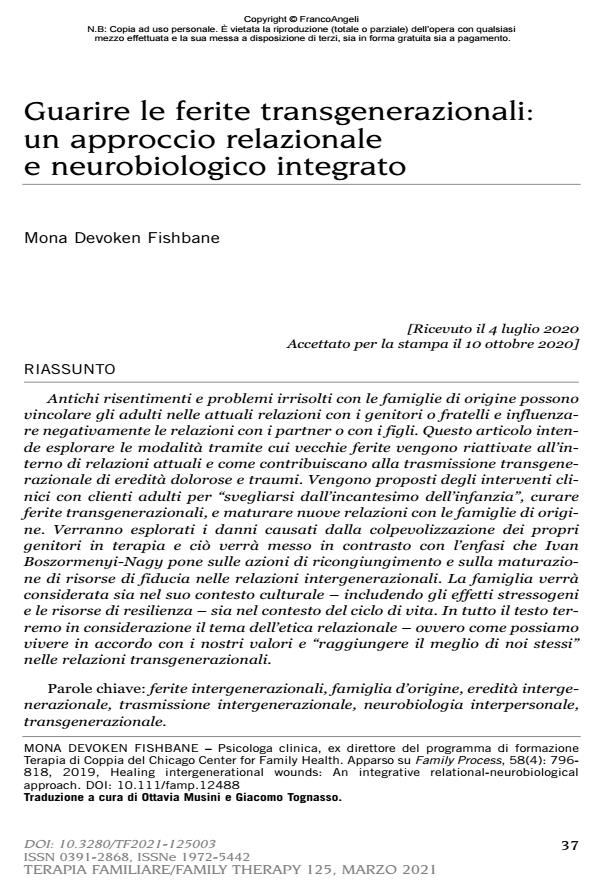Guarire le ferite transgenerazionali: un approccio relazionale e neurobiologico integrato
Titolo Rivista TERAPIA FAMILIARE
Autori/Curatori Mona Devoken Fishbane
Anno di pubblicazione 2021 Fascicolo 2021/125
Lingua Italiano Numero pagine 34 P. 37-70 Dimensione file 136 KB
DOI 10.3280/TF2021-125003
Il DOI è il codice a barre della proprietà intellettuale: per saperne di più
clicca qui
Qui sotto puoi vedere in anteprima la prima pagina di questo articolo.
Se questo articolo ti interessa, lo puoi acquistare (e scaricare in formato pdf) seguendo le facili indicazioni per acquistare il download credit. Acquista Download Credits per scaricare questo Articolo in formato PDF

FrancoAngeli è membro della Publishers International Linking Association, Inc (PILA)associazione indipendente e non profit per facilitare (attraverso i servizi tecnologici implementati da CrossRef.org) l’accesso degli studiosi ai contenuti digitali nelle pubblicazioni professionali e scientifiche
Antichi risentimenti e problemi irrisolti con le famiglie di origine possono vincolare gli adulti nelle attuali relazioni con i genitori o fratelli e influenzare negativamente le relazioni con i partner o con i figli. Questo articolo intende esplorare le modalità tramite cui vecchie ferite vengono riattivate all’interno di relazioni attuali e come contribuiscano alla trasmissione transgenerazionale di eredità dolorose e traumi. Vengono proposti degli interventi clinici con clienti adulti per "svegliarsi dall’incantesimo dell’infanzia", curare ferite transgenerazionali, e maturare nuove relazioni con le famiglie di origine. Verranno esplorati i danni causati dalla colpevolizzazione dei propri genitori in terapia e ciò verrà messo in contrasto con l’enfasi che Ivan Boszormenyi-Nagy pone sulle azioni di ricongiungimento e sulla maturazione di risorse di fiducia nelle relazioni intergenerazionali. La famiglia verrà considerata sia nel suo contesto culturale - includendo gli effetti stressogeni e le risorse di resilienza - sia nel contesto del ciclo di vita. In tutto il testo terremo in considerazione il tema dell’etica relazionale - ovvero come possiamo vivere in accordo con i nostri valori e "raggiungere il meglio di noi stessi" nelle relazioni transgenerazionali.
Parole chiave:ferite intergenerazionali, famiglia d’origine, eredità intergenerazionale, trasmissione intergenerazionale, neurobiologia interpersonale, transgenerazionale.
Mona Devoken Fishbane, Guarire le ferite transgenerazionali: un approccio relazionale e neurobiologico integrato in "TERAPIA FAMILIARE" 125/2021, pp 37-70, DOI: 10.3280/TF2021-125003